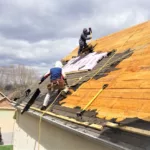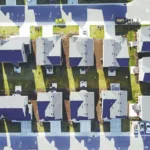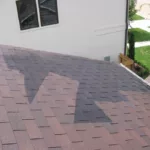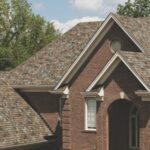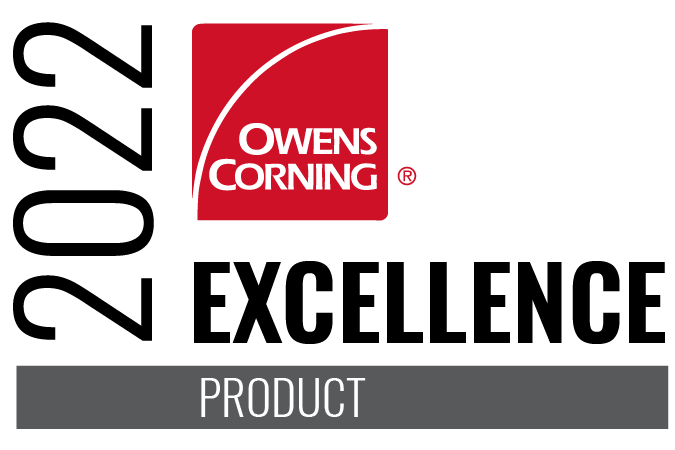7 Elements To Consider For A Long Lasting Roof
Before you make the decision to purchase a new roof here is some information about the parts of your roof that can be helpful when you sit down to get estimates.
- Shingle: Everyone is aware of what shingles are as it is the most common element of a roofing system. They not only act as the first line of defense for you home against the rage of nature but it also enhances the appearance of the house. Shingles are laid over the starter shingles in an overlapping manner with one another covering the entire roof. There are various types of shingles available made up of different materials like asphalt, wood, metal, cement, slate and more. They are also available in different colors so that you can blend your roof appearance with your house design.
- Starter Shingle: Starter shingle is one of the elements people overlook in a roofing system. A considerable attention needs to be given to them because if the starter shingles are not properly installed or adhesive then the roof would not be able to provide adequate wind resistance. Starter shingles are placed under the first row of shingle. As that row doesn’t have a shingle below it to protect the eaves and rakes, the starter shingles act as a barrier and prevent shingle blow-off. Starter shingle should be installed around all edges, eaves and rakes of your roof.
- Ice and Water Barrier: An ice and water barrier is a sticky layer of rubbery material, specially designed for leak-prone areas like valleys, eaves, seams, chimney, edges near the gutter system, and skylights. These areas are vulnerable to leakage as there is high amount of water flowing down the roof from these sections than compared to other parts. The barriers are self-adhesive in nature and thus act as a gasket around the nail gaps, making a waterproof boundary that prevents from any kind of leakage. Though one can think it off as an expense, the added cost of barrier is much less than the repair cost that may emerge in absence of Ice and Water barrier.
- Underlayment: Roofing underlayment is also made up of water-resistant barrier material that provides an extra layer of protection between the shingles and roof sheathing that prevents your roof from damage. Ice and Water Barrier is used for specific vulnerable areas like valley and eaves, while underlayment is for protecting the whole roof-area under the shingle. In absence of underlayment, when there is snow and wind driven rain, water can be trapped under your shingles putting your roof at risk of getting damage through moisture, leakage, rot, and mold. The main purpose of underlayment is to keep moisture away from penetrating into the roof and prevent it from damages caused by the weather. It also provides uniform surface upon which your shingles can be appropriately installed, enhancing the roof appearance.
- Hip & Ridge Shingle: Hips and ridges are the most stressful area of all roofs that require careful weather blocking. General roof shingles are a bit thinner compared to ridge cap shingles and may crack or tear when folded over the ridge. Ridge cap shingles are thicker and are pre-bent as they are specifically designed keeping the ridge area in mind. This cap shingles have a bit more amount of adhesive near the end of the shingle which helps to keep it intact with the shingle below. This prevents the possibility of shingle blow-off during heavy winds flow. Hips and ridge shingle is an important element of roofing system that provides a multilayer protection to your roof.
- Intake Ventilation: Appropriate roof ventilation system ensures durability and better performance of your roof. It helps to avoid damage and early aging of your roof that may be caused due to moisture in winter and excessive heat in summer. Intakes are generally installed at the eave area of the roof from where the air can penetrate and ventilate your attics. Roof Intake ventilation works best when accompanied with exhaust roof vent.
- Exhaust Ventilation: Exhaust vents are generally placed at or near a roof peak i.e. ridge. It lets the air in attics to exit and improves air flow. By using intake and exhaust vent simultaneously one can make most of the natural convection. Exhaust vent allows humidity and hot air to move out of the attics and provides longevity to your roof. There are various kinds of exhaust and intake vents available to choose from on the basis of your requirement and weather conditions in your surroundings.
We hope this information will be helpful when you are making the decision to purchase a new roof. And remember, call MLM Home Improvement and get 18 MONTHS, NO PAYMENTS and NO INTEREST on your next roofing project!


